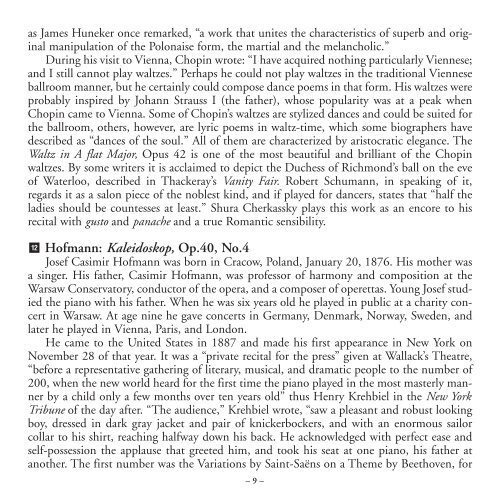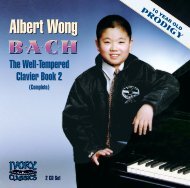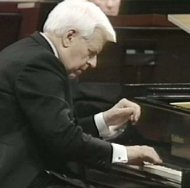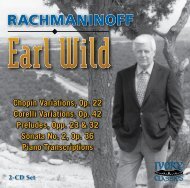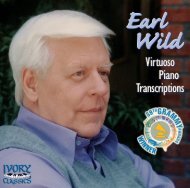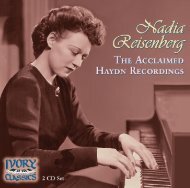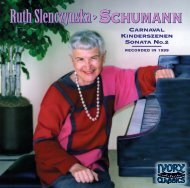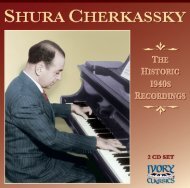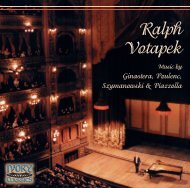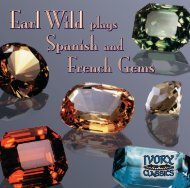70904 for PDF 11/05 - Ivory Classics
70904 for PDF 11/05 - Ivory Classics
70904 for PDF 11/05 - Ivory Classics
Create successful ePaper yourself
Turn your PDF publications into a flip-book with our unique Google optimized e-Paper software.
as James Huneker once remarked, “a work that unites the characteristics of superb and original<br />
manipulation of the Polonaise <strong>for</strong>m, the martial and the melancholic.”<br />
During his visit to Vienna, Chopin wrote: “I have acquired nothing particularly Viennese;<br />
and I still cannot play waltzes.” Perhaps he could not play waltzes in the traditional Viennese<br />
ballroom manner, but he certainly could compose dance poems in that <strong>for</strong>m. His waltzes were<br />
probably inspired by Johann Strauss I (the father), whose popularity was at a peak when<br />
Chopin came to Vienna. Some of Chopin’s waltzes are stylized dances and could be suited <strong>for</strong><br />
the ballroom, others, however, are lyric poems in waltz-time, which some biographers have<br />
described as “dances of the soul.” All of them are characterized by aristocratic elegance. The<br />
Waltz in A flat Major, Opus 42 is one of the most beautiful and brilliant of the Chopin<br />
waltzes. By some writers it is acclaimed to depict the Duchess of Richmond’s ball on the eve<br />
of Waterloo, described in Thackeray’s Vanity Fair. Robert Schumann, in speaking of it,<br />
regards it as a salon piece of the noblest kind, and if played <strong>for</strong> dancers, states that “half the<br />
ladies should be countesses at least.” Shura Cherkassky plays this work as an encore to his<br />
recital with gusto and panache and a true Romantic sensibility.<br />
12 Hofmann: Kaleidoskop, Op.40, No.4<br />
Josef Casimir Hofmann was born in Cracow, Poland, January 20, 1876. His mother was<br />
a singer. His father, Casimir Hofmann, was professor of harmony and composition at the<br />
Warsaw Conservatory, conductor of the opera, and a composer of operettas. Young Josef studied<br />
the piano with his father. When he was six years old he played in public at a charity concert<br />
in Warsaw. At age nine he gave concerts in Germany, Denmark, Norway, Sweden, and<br />
later he played in Vienna, Paris, and London.<br />
He came to the United States in 1887 and made his first appearance in New York on<br />
November 28 of that year. It was a “private recital <strong>for</strong> the press” given at Wallack’s Theatre,<br />
“be<strong>for</strong>e a representative gathering of literary, musical, and dramatic people to the number of<br />
200, when the new world heard <strong>for</strong> the first time the piano played in the most masterly manner<br />
by a child only a few months over ten years old” thus Henry Krehbiel in the New York<br />
Tribune of the day after. “The audience,” Krehbiel wrote, “saw a pleasant and robust looking<br />
boy, dressed in dark gray jacket and pair of knickerbockers, and with an enormous sailor<br />
collar to his shirt, reaching halfway down his back. He acknowledged with perfect ease and<br />
self-possession the applause that greeted him, and took his seat at one piano, his father at<br />
another. The first number was the Variations by Saint-Saëns on a Theme by Beethoven, <strong>for</strong><br />
– 9 –


